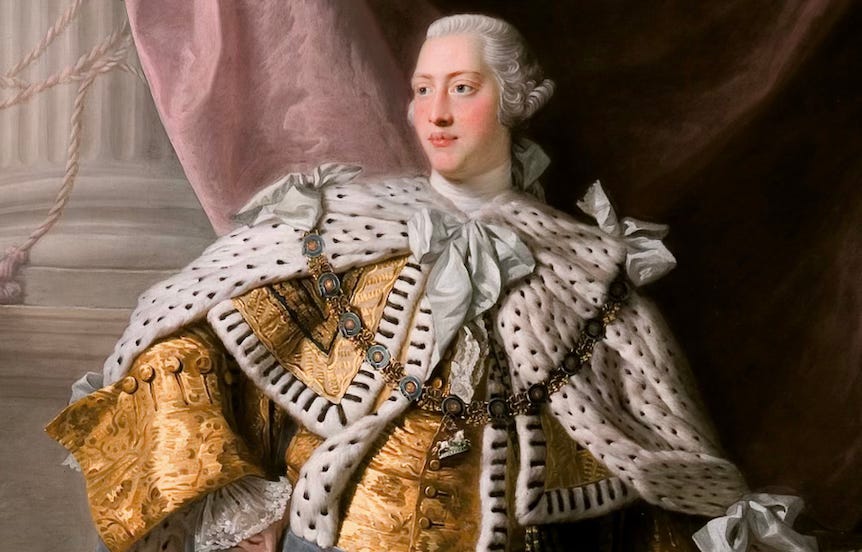Everything you thought you knew about King George III is wrong
He wasn't a brute or a tyrant
In 2022, the British tabloid Daily Star dramatized the perishability of Prime Minister Liz Truss’s leadership by streaming video of a head of iceberg lettuce to see if it would survive longer than the government. The produce, decorated in the style of Mr. Potato Head and dubbed Lizzy, outlasted the 45-day premiership of Truss.
It wasn’t the first time that Britons had chosen such a food analogy for political leadership.
As historian Andrew Roberts noted, the 24-year-old William Pitt the Younger, selected by King George III to lead a government in December, 1783, was considered by critics to be presiding over a “Mince-Pie administration” that wouldn’t last past Christmas.
The mince pie must have turned moldy. The Pitt government “was still in office seventeen Christmases later,” Roberts wrote in his 2021 book, The Last King of America: The Misunderstood Reign of George III.
Choosing Pitt turned out to be a masterstroke for King…
Keep reading with a 7-day free trial
Subscribe to Now It's History to keep reading this post and get 7 days of free access to the full post archives.



